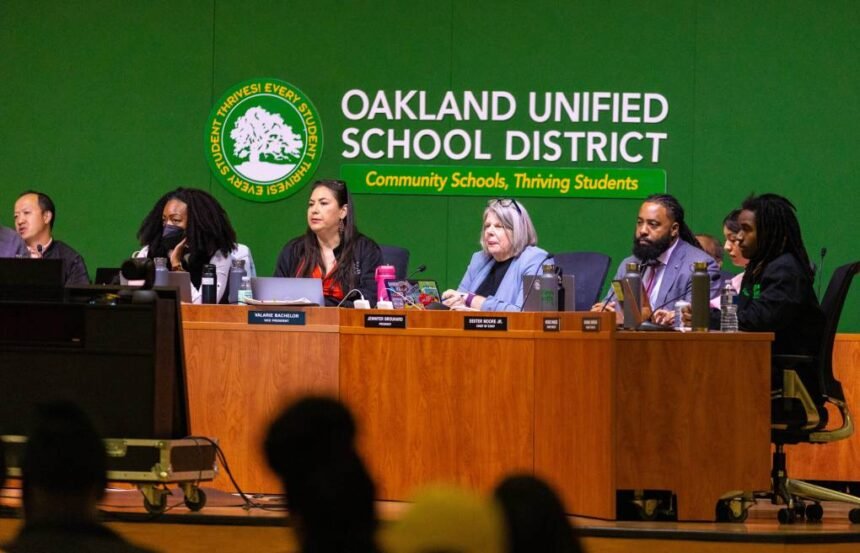Now, he believes new board leadership is driving the district back into financial jeopardy.
“It’s just been a series of actions and inactions that have led us to this point,” Hutchinson said. “We were always trying to thread the needle, and with this series of actions, it’s taken all of that leeway away.”
Hutchinson, who was among the board members opposed to merging schools in December, pointed to a series of 4-3 votes over the last nine months. He places much of the blame for the board’s shortcomings on President Jennifer Brouhard and Vice President Valerie Bachelor, who were elected board leaders in a 4-3 vote in January.
Since then, that same voting bloc — which is backed by the teacher’s union, has been aligned on several votes that have gone against district staff and affected OUSD’s financial situation.
In March, they made changes to the district’s budget balancing plan that ended up causing upheaval to after-school programs and could have cut about a third of the district’s spending on third-party services and contracts. Those union-backed “alternative budget balancing solutions,” which Brouhard said aimed to restore classroom personnel cuts, were ultimately rescinded.
The same four board members in April approved a separation agreement with Superintendent Kyla Johnson-Trammell, who was contracted to remain with OUSD until 2027.

The longtime leader had been credited with much of the district’s financial recovery since taking over in 2017 but often sparred with the teacher’s union. Her early departure led to questions about whether she was pushed out by the board.
In May, the union-backed board majority approved a $2.5 million agreement to restore teaching roles that were initially proposed to be cut this fall, narrowly avoiding a labor strike. At the time, it did not make any additional cuts to offset the expense.
Brouhard, Bachelor and board members Rachel Latta and VanCedric Williams, who approved those moves, did not respond to requests for comment.
In a separate letter last week conditionally approving OUSD’s 2025-2026 budget, Castro gave the board a deadline of Oct. 8 to direct district staff on how to make mid-year budget reductions to rebalance spending.

Hutchinson believes the necessary cuts will be at least $10 million for this year.
They would have to further cut currently planned expenses, though, to fulfill new wage demands from the Oakland Education Association.
The teachers union, whose contract expired in June, sent the district a compensation proposal in August requesting a 9% retroactive raise from July, and an additional 5% increase next year, among other costly demands.
“Until our district prioritizes stability, every year our schools will lose incredible educators to other districts with better pay and benefits,” said OEA spokesperson Jessica Beard. “We know that districts that invest in their classroom staff see successful and supported students as a result, and we need to see OUSD do the same.”
Hutchinson said the district hasn’t set aside any money for increased wages and will have to make dollar-for-dollar cuts to raise them.
“If our teachers union wants a $20 million package for this year, we will have to make $20 million in spending cuts for this year in order to do that,” he told KQED.
Hutchinson said board leadership has yet to schedule a meeting to discuss the necessary cuts. If they fail to act, he said, it might be best for the county to step back in.
KQED’s Sara Hossaini contributed to this report.







